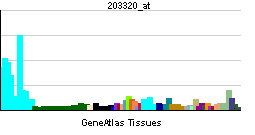Entrez 10019 | Ensembl ENSG00000111252 | |
 | ||
External IDs MGI: 893598 HomoloGene: 36179 GeneCards: SH2B3 | ||
SH2B adapter protein 3 (SH2B3), also known as lymphocyte adapter protein (LNK), is a protein that in humans is encoded by the SH2B3 gene on chromosome 12.
Contents
SH2B adapter protein 3 is a protein that in humans is encoded by the SH2B3 gene on chromosome 12. It is ubiquitously expressed in many tissues and cell types. LNK functions as a regulator in signaling pathways relating to hematopoiesis, inflammation, and cell migration. As a result, it is involved in blood diseases, autoimmune disorders, and vascular disease. The SH2B3 gene also contains one of 27 SNPs associated with increased risk of coronary artery disease.
Gene
The SH2B3 gene resides on chromosome 12 at the band 12q24 and contains 12 exons.
Protein
This protein belongs to the Src homology 2-B (SH2B) adapter family. LNK contains 3 functional domains: a C-terminal Src homology 2 (SH2) domain, a pleckstrin homology (PH) domain, and a dimerization domain. The SH2 domain spans approximately 100 amino acid residues and binds phosphotyrosine-containing proteins such as kinases. The PH domain spans approximately 120 amino acid residues and binds the phosphatidylinositol lipids found in the cell membrane. Thus, it is proposed to target the protein to the cell membrane, where LNK performs its regulatory function. The dimerization domain spans approximately 70 amino acid residues and contains a central phenylalanine zipper motif, which is formed by stacking of the aromatic side chains from 10 phenylalanine residues. This motif is responsible for facilitating the homo- or heterodimerization of SH2-B family proteins as a mechanism for regulating signal transduction. In addition to these domains, LNK possesses a proline-rich region that contains a minimal consensus sequence of Pro-X-X-Pro, which is recognized by the SH3 domain of another protein, as well as putative tyrosine phosphorylation motifs.
Function
LNK is widely expressed in human tissues, with the highest expression in hematopoietic cells. LNK negatively controls the activation of several receptors activation, including stem cell factor receptor (c-kit), thrombopoietin receptor (MPL), erythropoietin receptor (EPOR), platelet-derived growth factor receptor (PDGFR), macrophage colony-stimulating factor receptor (c-Fms), and their related pathways. LNK is a negative regulator of signaling in endothelial cells, such as the TNF signaling pathway, especially in inflammation. LNK has been found to function as a negative regulator in lymphopoiesis, megakaryopoiesis, erythropoiesis as well as HSC expansion by moderating growth factor and cytokine receptor-mediated signaling. The overexpression of LNK led to the inhibition of anti-CD3 mediated NF-AT-Luc activation, indicating that LNK is involved in the mechanism of T cell-negative regulation. In addition to its role in progenitor cell growth and commitment, LNK appears to be involved in cell motility and cellular interactions. LNK modulates crosstalk between integrin- and cytokine-mediated signals, thus controlling thrombopoiesis. LNK facilitates integrin aIIbb3 phosphorylation and signaling in order to promote platelet cytoskeleton rearrangement and spreading, and thus stabilizes thrombosis formation.
Interactions
SH2B3 has been shown to interact with Filamin.
Clinical significance
In humans, genetic linkage analyses, genome-wide association studies of single nucleotide polymorphisms, copy number variation surveys, and mutation screenings found the human chromosomal 12q24 locus, with the SH2B3 gene at its core, to be associated with an exceptionally wide spectrum of disease susceptibilities. For example, hematopoietic traits of red and white blood cells (like erythrocytosis and myeloproliferative disease), autoimmune disorders, and vascular pathology have been reported. Moreover, co-expression of the interleukin-7 receptor together with LNK was carefully studied, and it was concluded that interleukin-7 receptor expression was significantly more highly expressed than LNK in B-cell acute leukemic lymphoma. This observation distinguished a novel subset of high-risk B-cell acute lymphoblastic lymphoma with a potential therapy targeting the interleukin-7 signaling pathway. Another study indicated that LNK can suppress the interleukin-7/JAK/STAT signaling pathway to restrict pre B-cell progenitor expansion and leukemia development, which provided a pathogenic mechanism and a potential therapeutic approach for B-cell acute lymphoblastic leukemia with SH2B3 gene mutations.
Clinical marker
A multi-locus genetic risk score study based on a combination of 27 loci, including the SBH2B3 gene, identified individuals at increased risk for both incident and recurrent coronary artery disease events, as well as an enhanced clinical benefit from statin therapy. The study was based on a community cohort study (the Malmo Diet and Cancer study) and four additional randomized controlled trials of primary prevention cohorts (JUPITER and ASCOT) and secondary prevention cohorts (CARE and PROVE IT-TIMI 22).
